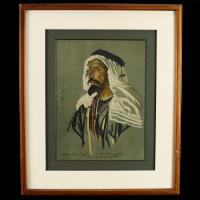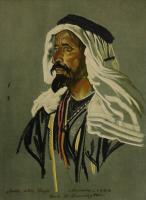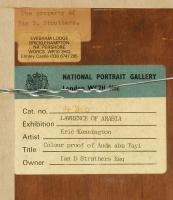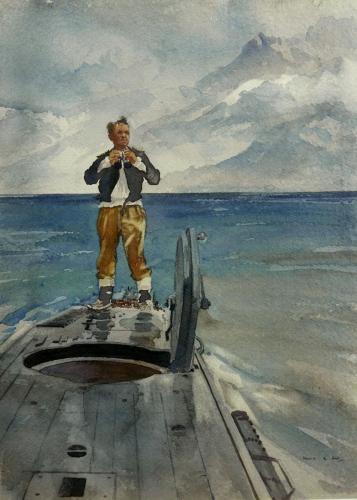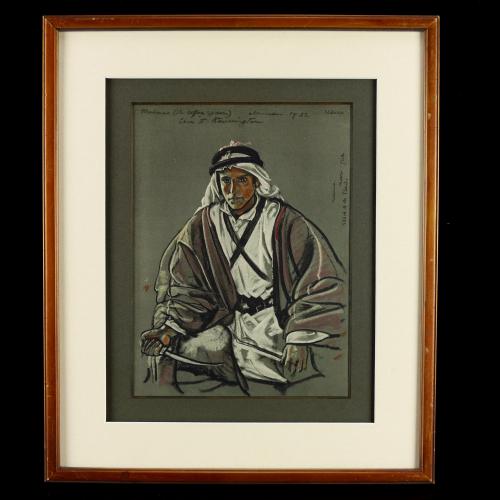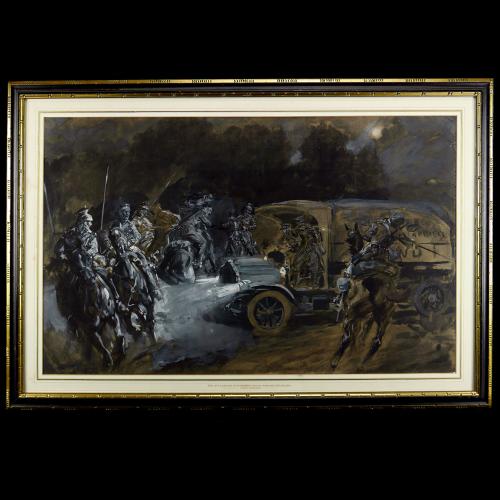
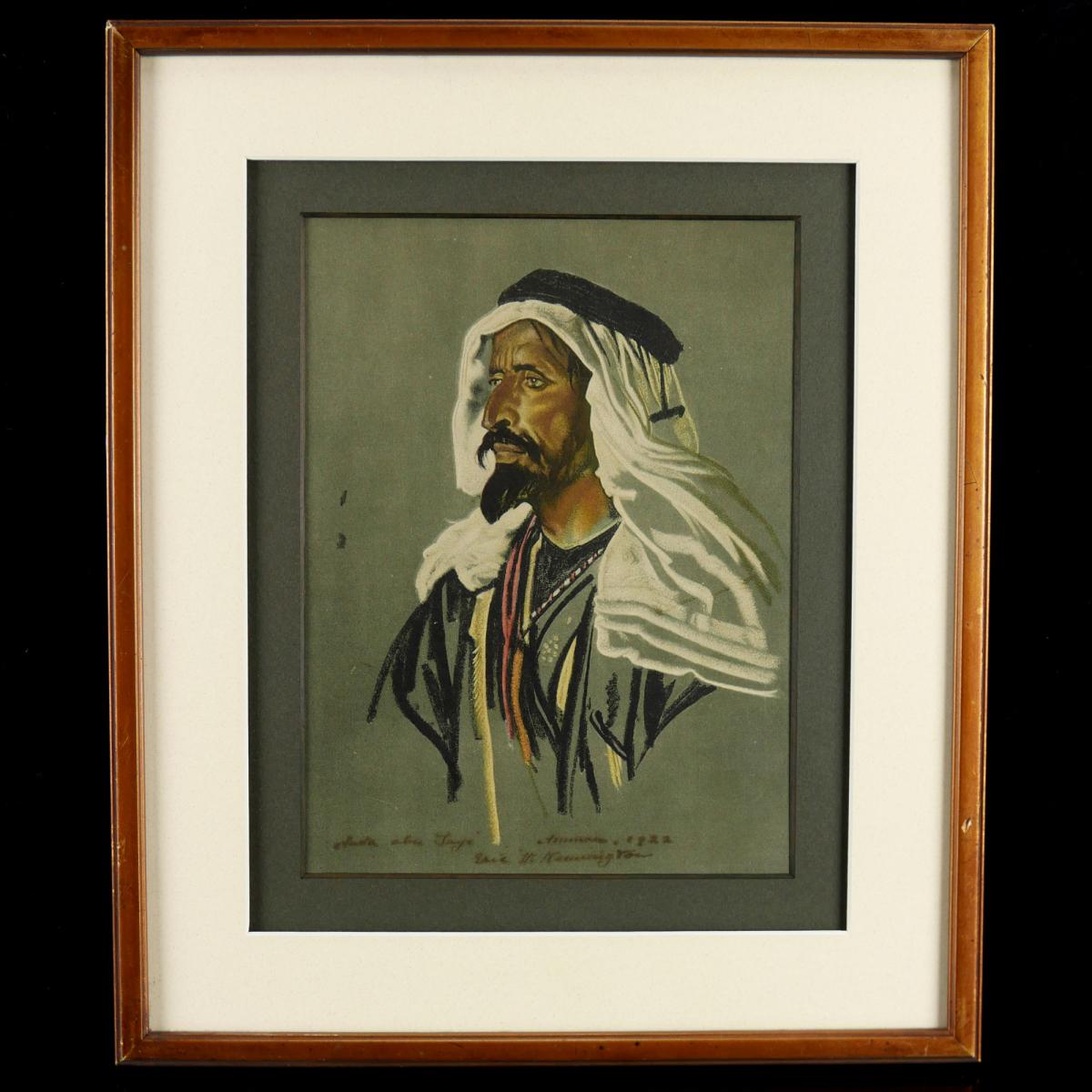
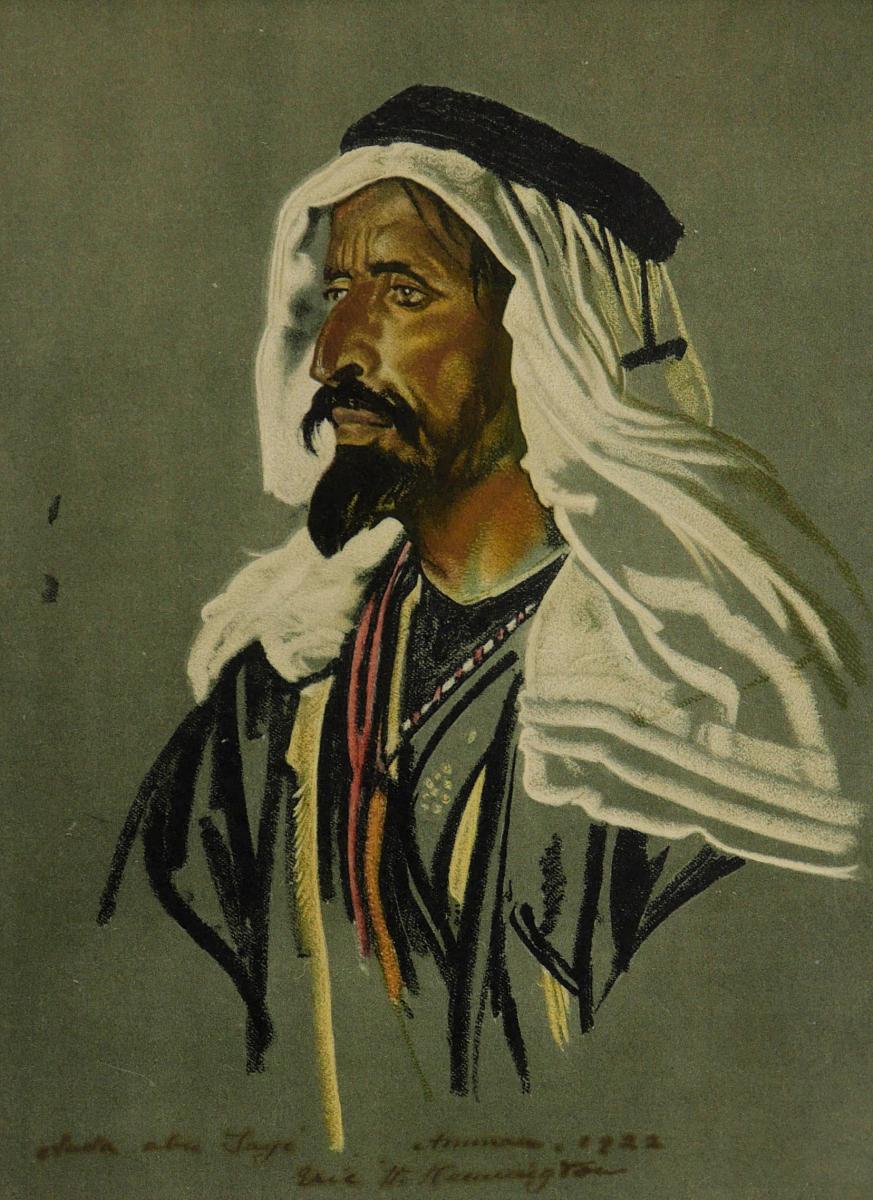
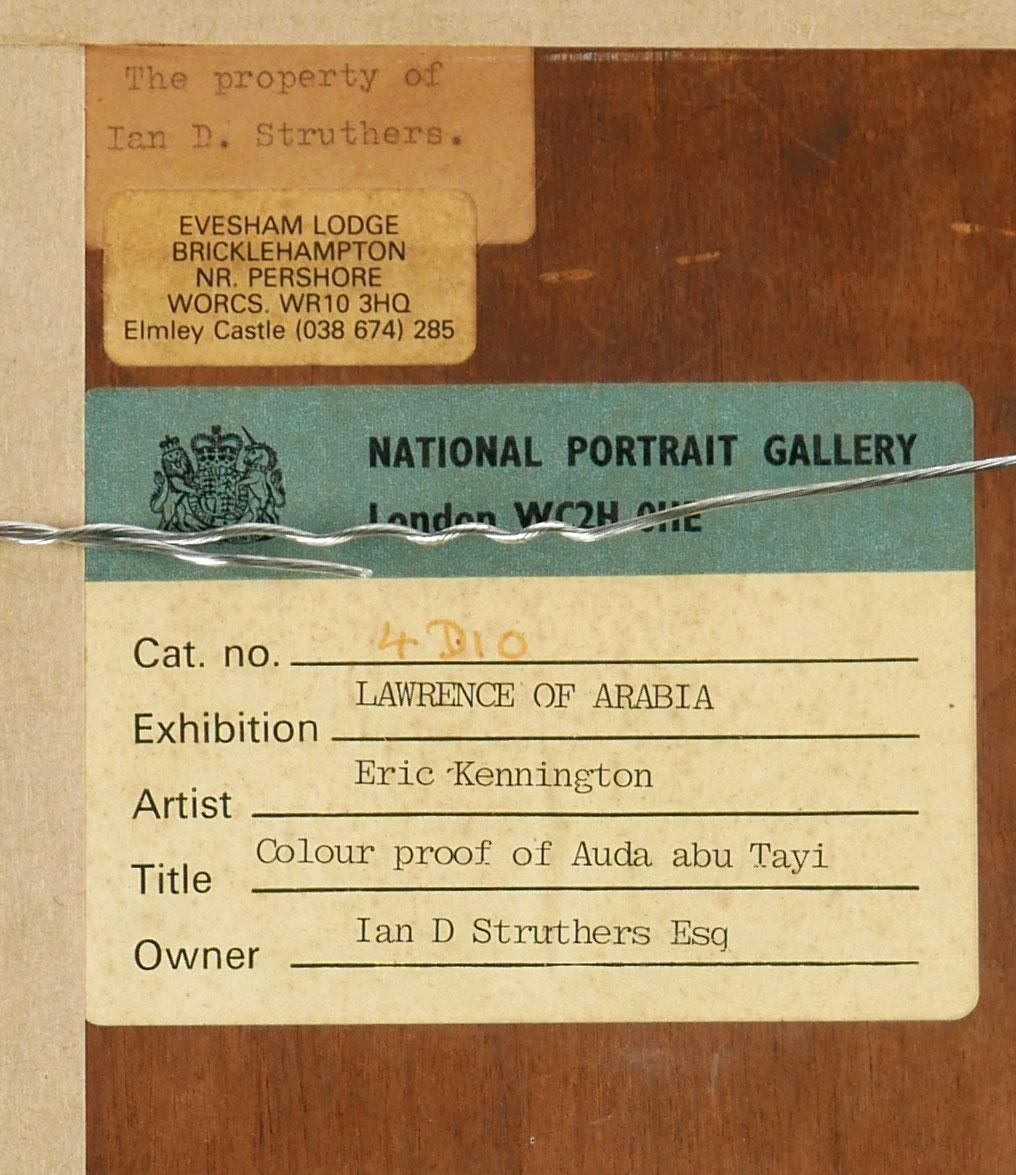
Price
£4500.00This object is eligible for a Certificate of BADA Provenance
The BADA Standard
- Since 1918, BADA has been the leading association for the antiques and fine art trade
- Members are elected for their knowledge, integrity and quality of stock
- Our clients are protected by BADA’s code of conduct
- Our dealers’ membership is reviewed and renewed annually
- Bada.org is a non-profit site: clients deal directly with members and they pay no hidden fees
Lawrence of Arabia - Portrait of Auda Abu Tayi, 1926.
Overall: 25cm (10in) x 18.5cm (7.25in).
Provenance:
Eric Kennington RA (1888-1960).
Thence to the artist’s nephew.
Ian Duncan Struthers (1915-1994).
Exhibited:
National Portrait Gallery, 1988-89.
Literature:
Kennington, E.H. (1942) ‘Drawing The RAF’, pp.14,16.
Lawrence, T.E. (1926 & 1935) ‘Seven Pillars of Wisdom, A Triumph’.
Wilson, J. (1988) ’T.E. Lawrence: Lawrence of Arabia’, (NPG exhib. cat), p.82.
Chromolithograph. Artist’s annotated colour proof plate for the Subscriber’s Edition of ‘Seven Pillars of Wisdom’. Commissioned by order of T.E. Lawrence from the London printers Whittingham & Griggs Ltd. Signed by the artist in ink lower left and centre ‘Auda Abu Tayi Amman, 1922 / Eric H. Kennington.’ Contained in period glazed frame. The reverse bearing National Portrait Galllery Lawrence exhibition label acknowledging the ownership of the artist’s nephew, Ian D. Struthers. The original pastel is recorded as lost. Provenance: By descent from the artist.
The plates for Lawrence's masterpiece of war and travel writing ‘Seven Pillars of Wisdom’ were an obsession of the author. They became one of the most technically demanding and expensive aspects of the privately-printed 1926 subscribers' edition that contained 66 illustrations and numbered a total of 211 copies. Lawrence commissioned illustrations from some of the best-known artists of the period, but the technical problems of reproducing their images accurately and to Lawrence’s satisfaction were great, as the author’s statement on the title-page of ‘Seven Pillars’ attests: 'The first experiments were made in February, 1921, and the final subject printed November 1926'.
Lawrence admired Kennington’s work as an official war artist and purposedly tracked him down to ask whether it might be possible to draw portraits based on photographs of the Arab personalities in ‘Seven Pillars’. Kennington, whose previous knowledge of Lawrence had been derived from the Lowell Thomas lectures, was fascinated by the project, and rejected the idea of working from photographs. Instead, he suggested that he should visit the Middle East and draw the Arabs from life. Shortly afterwards Lawrence was appointed to a position in the Colonial Office at the behest of Churchill, and therefore could not accompany Kennington to the Middle East as he had planned. Nonetheless, as Lawrence wrote to Robert Graves, ‘Kennington is going all the same: (that man is a great man) and as an official I’ll be able to help him even more than ever’. Kennington returned from the Middle East with a remarkable series of twenty pastels – known as his ‘Arab Portraits’. Several found their way into the collections of the Tate, the Royal Academy, and the National Portrait Gallery; the whereabouts of others are unknown, perhaps explaining why Kennington retained the present chromo-lithograph portrait. The portraits were subsequently published in ‘Seven Pillars’ in colour for the subscribers and in monochrome in later editions.

Auda was leader of the Abu Tayi Howeitat, a tribe based to the north of the Hejaz. He helped Lawrence plan the expedition to Akaba and played an important role in its success. Lawrence met him for the first time in April 1917 at Feisal's camp in Wejh. ‘The inimitable Auda' is described in a report Lawrence sent to the Arab Bulletin:
'He must be nearly fifty now (he admits forty) and his black beard is tinged with white, but he is still tall and straight, loosely built, spare and powerful, and, as active as a much younger man. His lined and haggard face is pure Bedouin: low forehead, high sharp hooked nose, brown-green eyes, slanting outward, large mouth ... pointed beard and moustache, with the lower jaw shaven clean in the Howeitat style ... He has married twenty-eight times, has been wounded thirteen times... He has only reported his "kill" since 1900, and they now stand at seventy-five Arabs; Turks are not counted…’ He sees life as a saga and all events are significant and all personages heroic.'
In Seven Pillars Lawrence also described an incident which took place at their first meeting: 'Suddenly Auda scrambled to his feet with a loud "God forbid"', and flung from the tent. We stared at one another, and there came a noise of hammering outside. I went after to learn what it meant, and there was Auda bent over a rock pounding his false teeth to fragments with a stone. "I had forgotten," he explained, "Jemal Pasha gave me these. I was eating my Lord's bread with Turkish teeth! Unfortunately he had few teeth of his own, so. .. he went about half-nourished till we had taken Akaba, and Sir Reginald Wingate sent him a dentist from Egypt to make an Allied set.’
The BADA Standard
- Since 1918, BADA has been the leading association for the antiques and fine art trade
- Members are elected for their knowledge, integrity and quality of stock
- Our clients are protected by BADA’s code of conduct
- Our dealers’ membership is reviewed and renewed annually
- Bada.org is a non-profit site: clients deal directly with members and they pay no hidden fees


